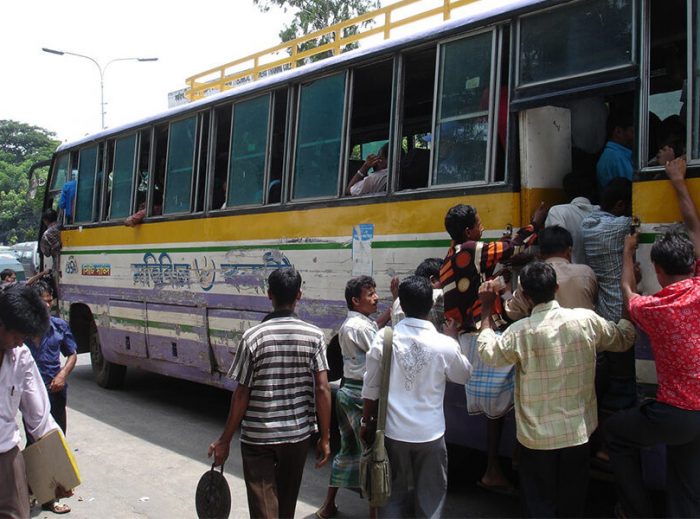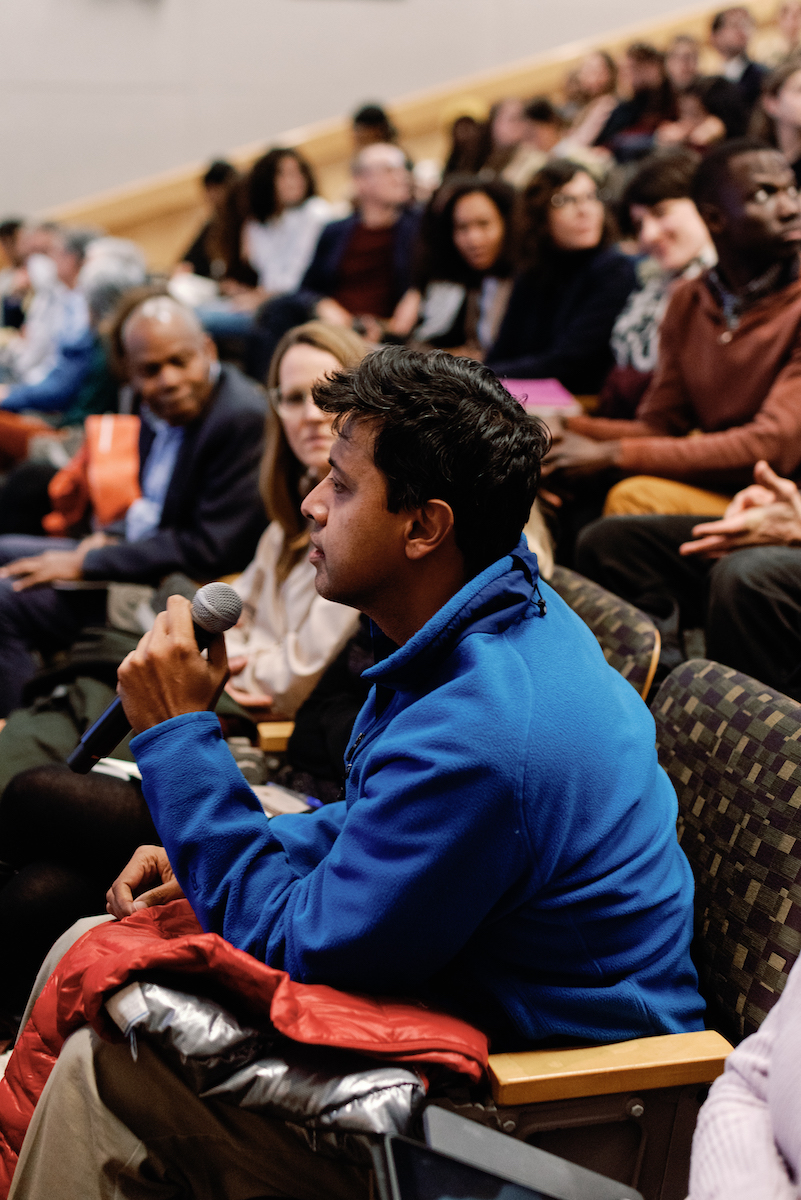Migration Subsidies: Does encouraging relocation increase welfare and productivity?

The Welfare Effects of Encouraging Rural-Urban Migration
Understanding the obstacles to growth and productivity in low- and middle-income countries is essential to creating policy solutions that can lift people out of poverty. One common explanation for gaps in growth rates between countries is that lower-income countries do a poor job of matching workers to the jobs in which they would be the most productive. Salary and productivity levels are generally much higher in cities, so encouraging workers to migrate could stimulate the economy by shifting labor to its most productive outlets. Recent experimental trials have investigated this possible solution by subsidizing migration from rural to urban areas. They found that subsidizing migration led to substantial consumption gains due to an increase in salary. Because the higher salaries mean more productive matches, the subsidies were considered effective at alleviating misallocation.
However, a new analysis of these results is presented in a paper published in the May 2023 issue of Econometrica by Mushfiq Mobarak, Professor of Economics at Yale and an EGC affiliate, and coauthors David Lagakos and Michael Waugh. Pairing a dynamic model of migration with experimental data, the researchers analyze the different components that impact a worker's decision to migrate. Understanding when and why workers choose to migrate is key to determining whether subsidies can lead to large productivity gains.
Workers who would only migrate with a subsidy tend to be less wealthy and less productive than their peers.
Most workers who would be much more productive in cities are already there.
Productivity gains from migration subsidies appear to be limited, especially given factors that make migration unattractive (e.g. poor housing options in urban slums).
Migration subsidies are slightly more effective than unconditional cash transfers at improving the welfare of the poorest, and both are significantly more effective than rural “workfare” programs, which actively discourage migration.
Experimentation and misallocation
Much of the difference in income per capita between countries can be explained by differences in total factor productivity (TFP). TFP is determined by several difficult to observe factors, such as technological progress, management practices, and the efficiency of labor markets, making it a challenging metric to study. In macroeconomics, a leading explanation for slow economic growth in lower-income countries is that they have lower TFP, so identifying cost effective ways to increase TFP could create growth and welfare gains. One common theory to explain lower TFP in lower-income countries is that their factors are spatially misallocated, meaning that workers and capital aren’t located where they could be the most productive. As Mobarak explained in an EGC interview, “If you could better match the labor to where the capital is, you can generate a lot more growth, and that's not happening.”
Researchers in Bangladesh conducted a series of experiments to determine the impact of migration subsidies, a potential method of correcting spatial misallocation. Their research culminated in a 2014 paper by Mobarak, Chowdhury, and Bryan and a 2017 paper by Mobarak, Chowdhury, and Akram. The results were promising, indicating that these subsidies induced many households to send migrant workers to urban areas, and led to significant consumption gains. Yet these results don’t necessarily mean that these workers were misallocated. “We run the experiment and we see that people do in fact move. When they move they get a pretty sizable gain in consumption,” Mobarak recounted. “If you see that large increase in consumption, then it must be that they are much more productive somewhere else. So the question becomes, can we now conclude that there is actually a lot of misallocation? That’s the question we are trying to answer in this paper.”
Measuring Poverty with Panel Surveys
The Plenary Session of the The North East Universities Development Consortium (NEUDC) 2022 Conference featured development economists introducing three major household panels surveys available to researchers, and elevating key measurement questions related to the collection and use of this type of data. The event included a moderated discussion followed by Q&A with the audience of NEUDC attendees.

A model of migration and worker decision-making
Mobarak and his coauthors created a dynamic model of migration to disentangle the many factors that go into the observed impacts of the subsidy. It captures the various factors that impact a migrant’s decision to move, including those that aren’t observable in the experimental data.
In the model, households make their own decisions about whether to send a family member to work in often distant cities, weighing factors like the cost of travel, having to spend extended time away from their community, and poor housing options in urban areas.

Migrant workers board the bus to the city. Photo courtesy Y-Rise.
The researchers calibrated the model using the real-world experimental data which allowed them to assess which factors were the most important in determining worker behavior and help investigate the impact of the subsidies.
The model reveals that there is high nonmonetary disutility associated with travel. This is an important result because it is difficult to capture this disutility in an experiment, yet it has implications for the efficacy of strategies that aim to improve TFP. If people aren’t migrating because it is extremely unpleasant, then the higher consumption observed in urban areas could be exaggerating potential welfare gains from migrating. Thus, encouraging migration may not be an effective way of improving people's lives.
The researchers then investigated the source of this disutility by surveying the same set of households used to estimate the model. Disentangling these sources of disutility allowed them to identify promising areas of future research in increasing welfare and productivity among migrants. According to Mobarak, “If we had some policy tools that would make people not feel so bad about migrating, we could unlock that productivity gain without that loss of welfare.” They found that housing quality was an important contributor to a worker’s decision whether to migrate, and thus is a potentially large component of the disutility associated with migration. This result implies that a program to fund urban infrastructure development or temporary housing for migrants could cut down on the unpleasantness associated with migration and increase welfare gains associated with subsidies.
A more nuanced story than misallocation

Mushfiq Mobarak participating in the discussion at the 32nd Kuznets Memorial Lecture. Photo by Julia Luckett.
The model highlights several aspects of the subsidy that weren’t observable in the empirical data which provide evidence against a simple misallocation narrative. The first is that workers who would only migrate if they were offered a subsidy are poorer and less productive. This stands to reason: if the subsidy is the difference-maker in determining whether to migrate, then the individual likely doesn’t have the money to migrate without it. The second is that workers who would be much more productive in the city are most likely already there. This hints that the benefit of the migration subsidies comes from funneling funds to the workers who need it the most, instead of giving them access to inherently better opportunities. If the researchers were really observing a permanent misallocation correction, they would have seen more lasting effects.
“The experiment was in 2008… by 2012 and 2013, the control group and the treatment group looked very similar,” coauthor David Lagakos explained.
“How would you square that with a world where these workers have the skills to get lucrative jobs in [the city]? If that were true, they would go and they would never come back. But they do go back. Five years later it’s difficult to tell these groups apart, suggesting that it's not a permanent misallocation.” The model finds that although the subsidy improved welfare for the poorest workers, it did not permanently enhance overall productivity.
This is not to say, however, that these subsidies aren’t useful. In fact, the subsidies provided a more cost-effective way of improving the welfare of the poorest people. Migration subsidies proved to be slightly more effective than unconditional cash transfers and significantly more effective than “workfare” programs (like rural employment guarantees) for improving the welfare of the poorest one-fifth of people in the study. This makes sense, as requiring that a person migrate to get the cash transfer is an “ordeal mechanism”: one of the best ways to make sure that cash transfers are going to those they would help most is requiring that they do something unpleasant to get it. “By offering this transfer conditionally on migrating, you are targeting the people who are the most desperate,” Lagakos clarified.
One piece of the puzzle
The researchers did not find the results they anticipated: the subsidies, on their own, do not appear to have a strong potential for increasing TFP by remedying spatial misallocation. The productivity benefits from the subsidies are heavily constrained by the disutility associated with relocating to the city. This reinterpretation of the experimental results has important implications for policy design in response to the study. Migrants report large disutility from poor housing conditions in city slums, so upgrading migrant housing could improve welfare.
Migration subsidies are only one part of a much larger and more nuanced policy puzzle, and improving factor allocations will likely prove more difficult than a simple migration subsidy mechanism. The findings concerning the disutility from poor housing conditions implies that a combination of policies to both make migration easier and improve urban infrastructure could together drive increases in TFP – a promising area of future research. Mobarak’s work successfully contextualizes a decade of previous research to provide a novel interpretation of empirical results, with important implications for policy.
Research Summary by Noah Robinson.